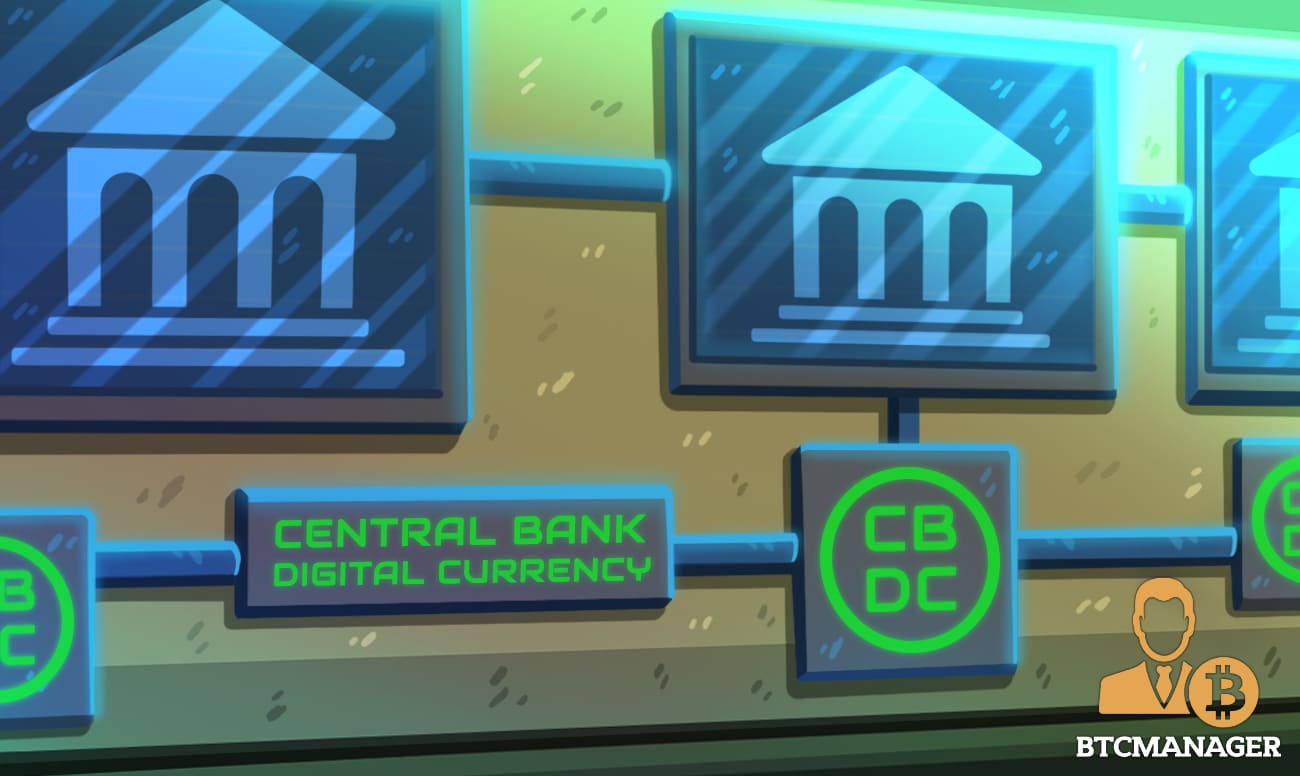What’s Next for Central Bank Digital Currencies?

Central bank digital currencies (CBDC) have been the talk of the town ever since the idea of a government-controlled blockchain came into prominence. The democratic ideas that blockchain technology is supposed to be a reminder for now run the risk of being compromised due to its rising popularity among government institutions the world over. As a result, the demand for decentralized finance (DeFi) and stablecoins has grown exponentially.
What Are CBDCs For?
Ever since the COVID-19 pandemic took a firm grip of the global economic order, countries around the world have put their money printers into double-shifts by pumping trillions of dollars into their economies. This unchecked printing of money, although well-intentioned, has led to the rise of several problems typically associated with paper money. The most prominent of them being the huge time lag between when a central bank takes an economic decision and its actual transmission to the common man.
Central banks are not supposed to interact directly with end-consumers. Therefore, these banks typically make monetary and fiscal decisions through various monetary and fiscal tools and policies whose ripple-effect is felt among the general populace. However, it seems that distributed ledger technology (DLT) can help bridge this time lag via central bank digital currencies and self-sovereign identities.
For the uninitiated, self-sovereign identities essentially imply that an individual should own and have complete control over their identity without the possibility of any intervention from administrative authorities. When looking from the lens of a government body, self-sovereign identities could be used to identify and link individuals to specific public addresses on a private blockchain. By bringing together digital identities and government-backed digital legal tender, citizens in dire need of monetary benefits could be benefited instantly without incurring exorbitant intermediation costs.
Paper Money Is Not Going Anytime Soon
That said, it should not be assumed that a CBDC-powered payment mechanism would completely eliminate the need for paper-based money. The aforementioned approach only highlights how DLT and smart contracts together can be leveraged to tackle some of the most concerning issues in our society today by digitizing the entire process of filing for unemployment benefits, generating a digital ID through biometrics and sending the monetary benefit in the form of CBDC. Blockchain technology holds the potential to completely automate all the three processes, exponentially increase the speed of execution of such a process, and at the same time mitigate the intermediary costs associated with it.
In fact, when observed closely, CBDCs promise some exciting possibilities which make them an alluring alternative to drive the digital economy of tomorrow.
Firstly, the digital nature of CBDCs ensures a high degree of safety for individuals in far-off places of the world where the normal financial infrastructure could not be extended due to myriad reasons. This also extends to countries with political and economic instability that are constantly in the process of battling unchecked hyperinflation and reviving the local markets to create consumer demand.
The digital nature of CBDCs enables the possibility of creating a truly inclusive financial structure with billions of people being a part of it. This can be achieved by creating digital identities on blockchain networks.
Next, the CBDCs address one of the major pain points of typical cryptocurrencies issued on blockchains – price volatility.
As the CBDCs are issued by central banks and backed by the national currency, they’re virtually resistant to volatile price fluctuations that are witnessed so often in the case of typical digital currencies. CBDCs function as stable coins that are pegged to fiat currencies and instil a sense of assurance and reliability in the psyche of the users.
Finally, as alluded to earlier, CBDCs also help raze down intermediary costs to a large extent courtesy of their digital nature.
Speaking of the disadvantages of CBDCs, it would lead to a compromise in users’ privacy through a carefully crafted confiscatory framework. At the same time, CBDCs could also pave the way for the rise of the infamous negative interest rates policies across the world which could further dampen the magnitude of investment and send countries into difficult economic perils.
Current National Projects on CBDCs
These arguments lead us to the question of whether CBDCs are a completely hypothetical idea or whether any central bank in the world is actually considering embracing this form of digital money. A little search leads us to the conclusion that, in fact, several major countries around the globe are seriously exploring the idea of adopting and issuing CBDCs.
For instance, China has run numerous pilot programs testing the viability of a digital yuan for routine use. Similarly, Japan has been mulling the exploration of CBDCs to match its Asian rival. Various supranational organizations have also urged central banks the world over to give ample consideration to the idea of issuing a CBDC sometime in the future. These developments could indeed be the signs of things to come in the future.
RSK-Powered Proof of Concept Being Tested in Argentina
Extending the scope of the argument to the periphery of CBDCs, RSK, a smart contract platform, recently announced that it had designed and executed a proof of concept with Argentina´s Central Bank to implement a decentralized system solution to handle direct account debit claims made by customers.
The proof of concept will be accessible to various actors in the country’s financial system and will help them make transactions in a standardized, reliable, and secure manner. Further, the fact that the solution is powered by the RSK blockchain will not only ensure end-to-end traceability for managing each claim but also keep track of bank account updates entered into the system.
Per sources close to the matter, the ultimate goal of the initiative is to foster the development of simple and efficient blockchain solutions that provide better alternatives to the existing clearing systems.
The ambitious proof of concept became a reality due to the tremendous level of collaboration between the participating banks and tech firms. At present, these actors are testing the solution to gauge its potential to tackle the existing process bottlenecks that hinder the integration between banks and system actors.
Demand for Decentralized Stablecoins
Although CBDCs sound efficient on the paper for their use as a currency, they compromise the privacy of the user and unlike the intended ethos of blockchain technology, represent a centralized form of money that is not too different from the current fiat currencies. As a result, it’s important for firms and projects to cater to the ever-increasing demand for decentralized stablecoins.
Some successful projects in the rapidly growing decentralized finance (DeFi) space are examples of entities that are catering to the growing global demand for DeFi. At present, the vast majority of projects in the DeFi space are powered by the Ethereum network. However, there are several other players in this budding space that offer equally attractive and arguably even better alternatives.
Take, for example, Money On Chain, a DeFi platform powered by RSK Technology. The decentralized platform provides a Bitcoin-collateralized stablecoin which addresses perhaps the biggest issue plaguing the larger cryptocurrency sector – volatility. Money On Chain offers three different tokens that have their own exclusive characteristics:
Dollar On Chain (DOC)
This stablecoin is pegged to the US dollar at a 1:1 ratio. At all times, 1 USD is equal to 1 DOC. The stable and volatile-free nature of DOC makes it ideal for individuals who are typically risk-averse and avoid the notorious volatile price movement of Bitcoin. By holding the DOC stablecoin, holders can be assured of stable returns in the volatile digital currency market.
BPRO
The BPRO stablecoin absorbs the unwanted Bitcoin risk from the DOC and is an ideal digital token for BTC holders. It passes part of the risk associated with holding DOC to the leveraged Bitcoin operations exchange, and thus, rewarding BPRO holders with a stable passive incoming without letting go on the free leverage.
Money On Chain (MOC)
This stablecoin essentially has three broad functions:
– MOC holders are eligible for a discount when paying the fees for using the platform using MOCs
– MOC holders can exercise the power to vote and veto the platform updates
– MOC can be used as an incentive for those who run “MOC” nodes as an incentive to BitPro holders
Final Thoughts
Summing up, RSK provides a ready-platform to projects like Money On Chain that can aid BTC holders to enjoy the advantages of a budding DeFi system built on top of the Bitcoin blockchain. Judging by the pace of developments in the DeFi and even the centralized finance or the CBDC space, it’s not wishful thinking to believe that numerous innovative and robust technology solutions could help tackle the volatility issue troubling the digital currency space today.
With a collaborative effort by both government-backed and autonomous decentralized platforms, a digital currency-powered future won’t be a distant dream of the future for long.













